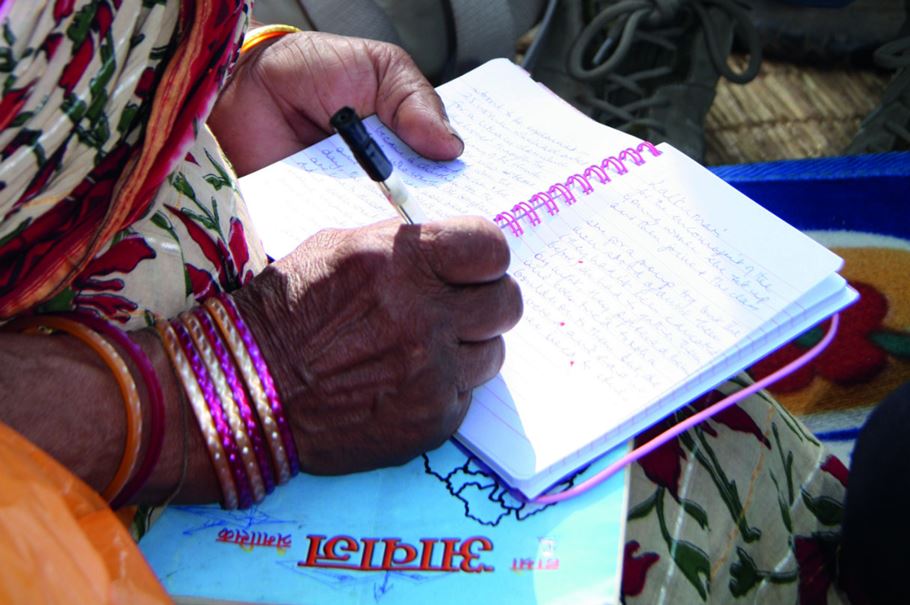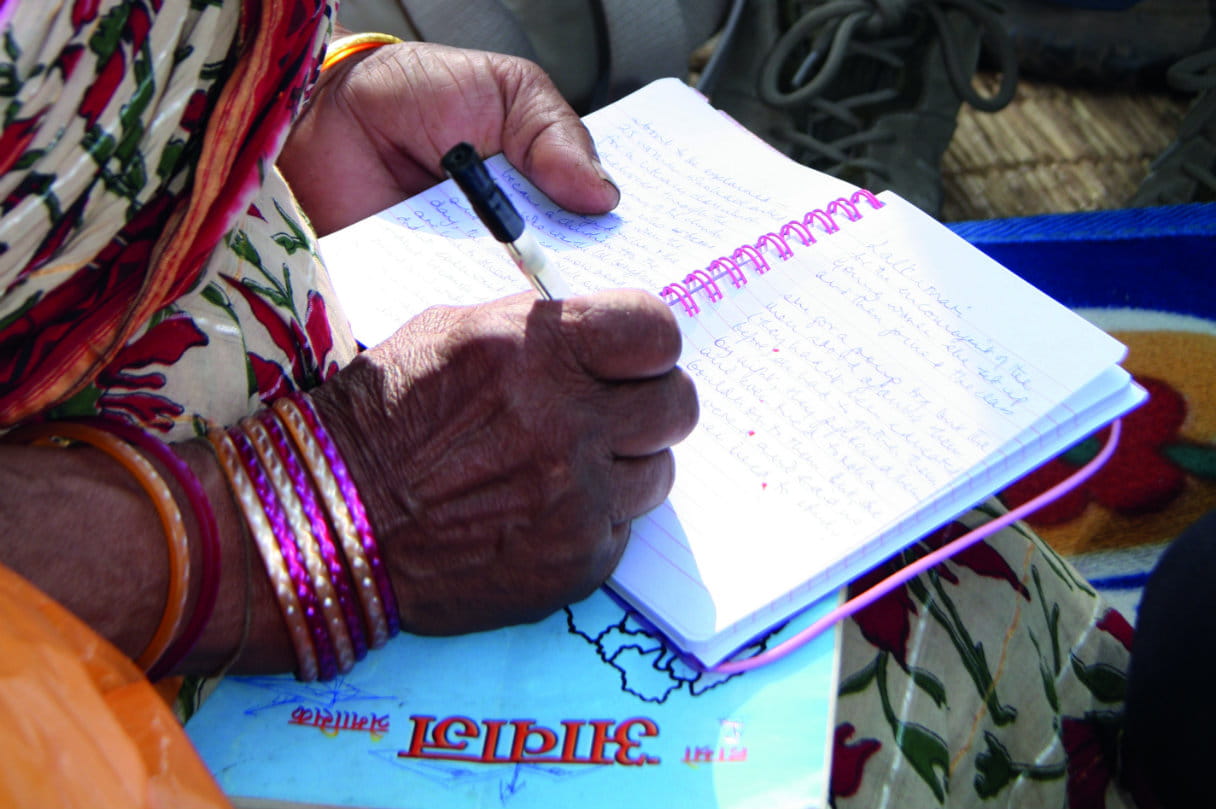‘Now where did I put that?’ Or perhaps more often – ‘What on earth does that say?’ These are my usual complaints after a trip to visit projects. I end up desperately searching for some important notes that I am certain I took while sitting under a tree in a village. Or, if I do find the notes, I spend hours trying to work out what the handwritten scrawl in my notebook actually says.

Articles
Keeping a good record
Thinking in advance about how to collect and store data can save us much frustration and many hours’ work afterwards.
2016 Available in English, French, Portuguese and Spanish


Are you more comfortable with pen and paper, or could you collect data digitally? Photo: Cally Spittle/Tearfund
Thinking in advance about how to collect and store data can save us much frustration and many hours’ work afterwards. This is something I have learnt from bitter experience!
Pen and paper
For many of us, taking notes with pen and paper is still the most common way of collecting information from the people we meet in our projects. However, I often find that it is hard to keep an accurate record of what is being said while staying fully attentive to the person I am talking to. The best way around this is to work with a partner. One person can focus on the conversation while the other takes notes.
If that is not possible, ask yourself what sort of notes you really need. If you just want to capture the main points or themes, then it may be better not even to try to write notes during the discussion. Instead, give yourself ten minutes afterwards to write down the key issues while your thoughts are still fresh.
Sound recordings
If accuracy is important, or if you need to capture actual quotations, then think about recording the interview. You can use a digital sound recorder or perhaps even your phone for this. Make sure you ask permission from the individual first. Explain how the recording will be used and what will happen to it afterwards – for example, will you delete it immediately afterwards or will it be kept on record somewhere? If it will stay on record, think about how you will protect the privacy of the person you spoke to.
Video
Another alternative to written records is video recordings. When carrying out an evaluation, I do a one-minute video interview with every team member at the end of each day. In the interview, I simply ask them about the main things that struck them during the day. I find that this provides a short, engaging snapshot summarising the key issues. The videos can also be used in presentations to summarise the evaluation after it has been completed. This is much easier to digest than a 40-page report!
If you want to show others the recordings, then a top tip is to invest in a microphone. It does not matter too much if your camera work is not brilliant, but clear sound is vital. You will not realise how much background noise there is until you play the video back. A simple, cheap, clip‑on microphone will immediately increase the quality of any recording.
Smartphone apps
You can go even further these days and stop using pen and paper altogether. There are many smartphone apps for collecting data. These are particularly useful if your survey questions have set answers to choose between rather than lots of open questions. At Tearfund we often use a data collection app called KoBoToolbox (see Resources page for more details). It is free, reliable and very easy to use.
Conclusion
Whether you are more comfortable with pen and paper or are exploring digital recordings, here are my two key tips:
- Think about how you will collect, manage, analyse and protect data in advance.
- Look at your notes or recordings as quickly after the event as you possibly can – ideally on the same day. The longer you leave it, the harder it will be to understand your scribbled notes or remember what was said in an unclear bit of a video or sound recording.
David Couzens worked as a Programme Effectiveness Adviser for Tearfund from 2014 to 2016. He is currently a Country Programme Support Officer for Tearfund’s peacebuilding work.
Email: [email protected]
Words used in this article
App a computer programme that runs on a mobile phone
Smartphone a mobile phone that has many of the same functions as a computer. It often has a touchscreen, internet access and the ability to run apps (see above).
View or download this resource
Get this resource
Get this resource
Similarly Tagged Content
Share this resource
If you found this resource useful, please share it with others so they can benefit too.

Subscribe to Footsteps magazine
A free digital and print magazine for community development workers. Covering a diverse range of topics, it is published three times a year.
Sign up now - Subscribe to Footsteps magazine





